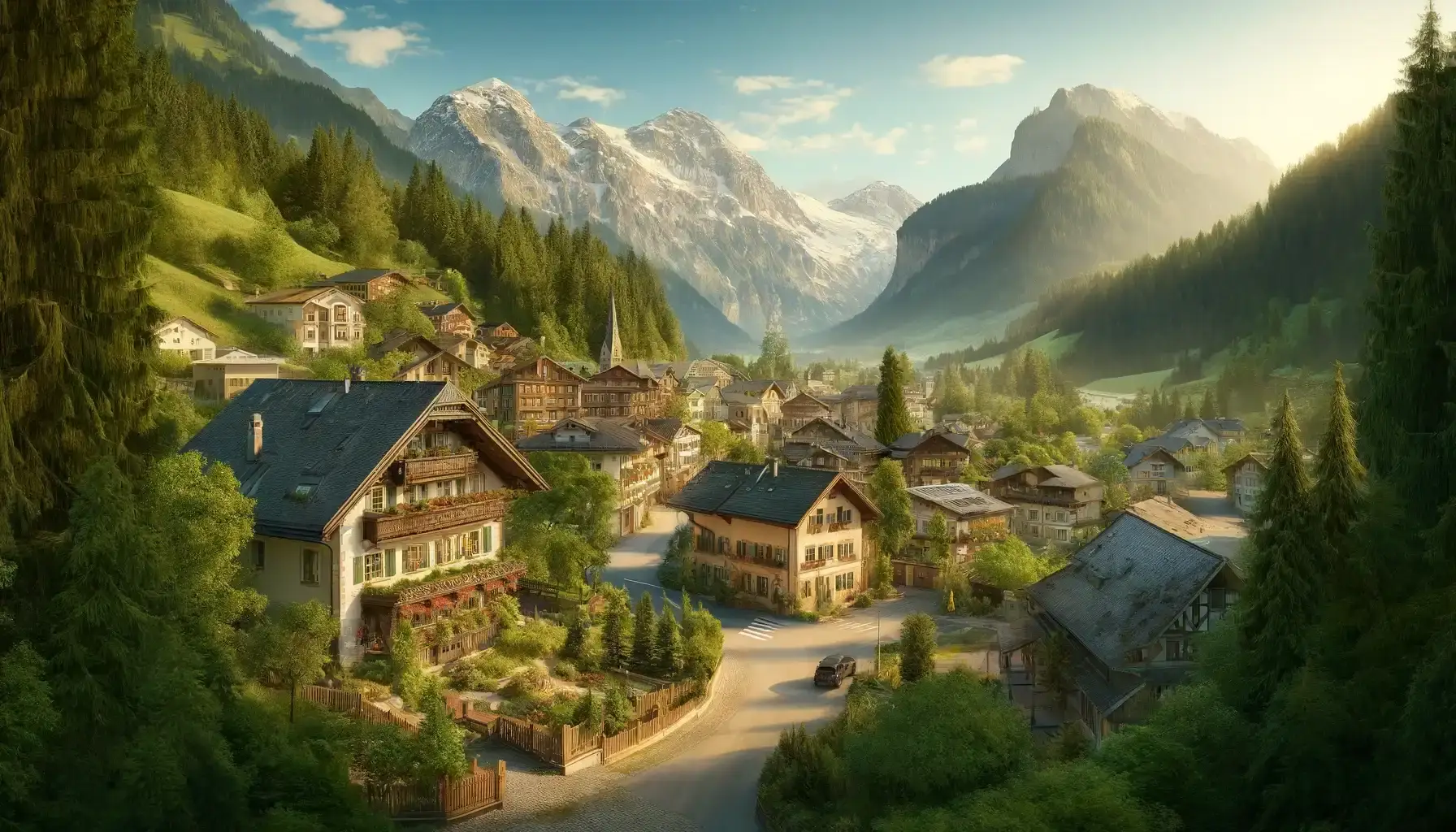
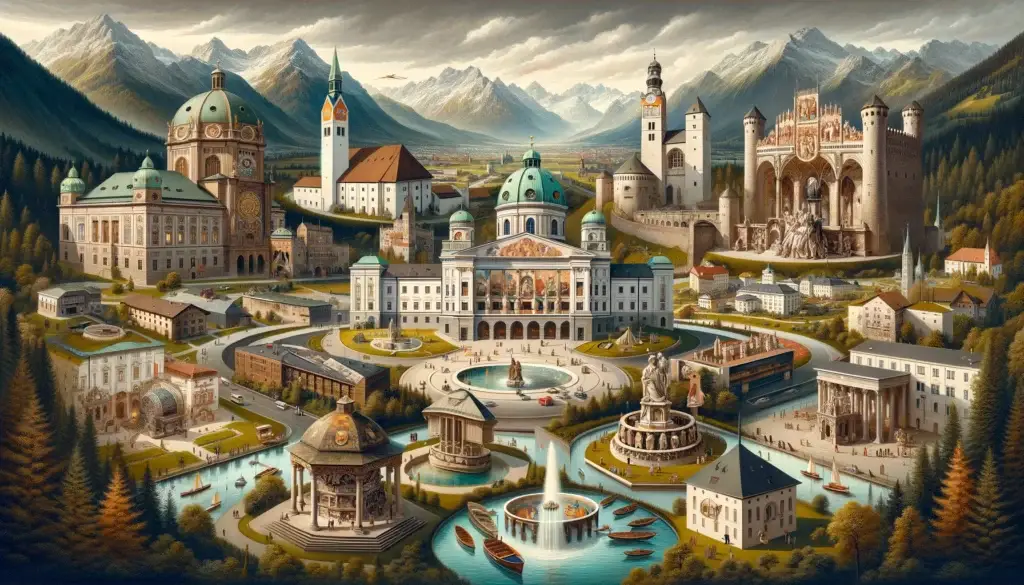
Historically, the Austrian Tyrol, located among the formidable Alps, borders Italy, Germany and Switzerland. Therefore, it is not surprising that some features of the national cultures of the peoples of the mentioned countries are organically intertwined in the culture of this federal land. This can be seen in the documents and historical relics carefully collected and preserved over the centuries and displayed for posterity in Tyrolean museums. And there are many of them.
The central city of Tyrol, Innsbruck, was founded in the eighth century and is located at the foot of the most enormous alpine mountain massif in the Northern Limestone Alps – Karwendel. Although long before this time, the Alps had already seen a lot of exciting things. Roman troops, Alemannic and ancient Germanic tribes of the Ostrogoths, Bavarian dukes, Irish and Anglo-Saxon missionaries popularizing Christianity.
The merit of the founding of Innsbruck belongs to the Duke of Meran, and it received rapid development under the patronage of the family of the Dukes of Habsburg, under which it acquired the status of the central city of Tyrol. Emperor Maximilian made the town famous as one of Europe’s primary weapons manufacturers and its political and cultural center.
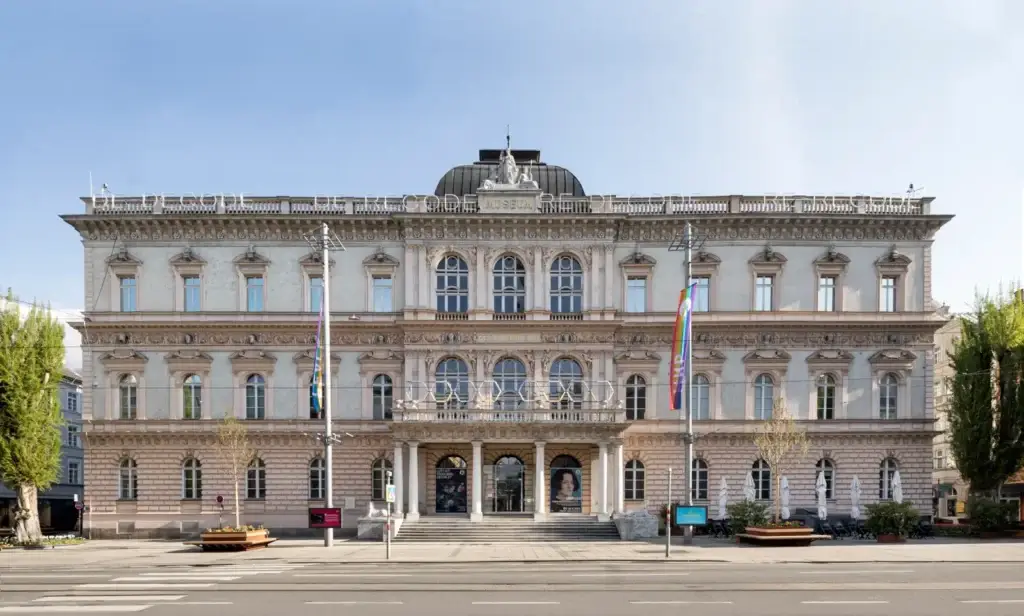
Last year, Tiroler Landesmuseum Ferdinandeum, one of Austria’s largest and oldest state-local history museums, celebrated its centenary. Count Karl Hotkom founded it to perpetuate the memory of the Austrian duke, patron, collector and educator Ferdinand II. By the way, the latter was a connoisseur of history and works of art during his lifetime. He kept the valuable and historical collections he collected in his Ambras castle, which were later transferred to the funds of other historical and cultural museums.
Talking about the Tyrolean State Museum Ferdinandeum, it is worth noting the museum’s exposition, which is divided into seven thematic parts, where, with the help of artifacts, you can trace the periods of development from the Middle Ages to the present day. There is a collection of historical items from the Roman Empire, the medieval era, everyday life, and the development of crafts and art to the present day. Historians and ethnographers have much to learn from Tyrol’s past.
Graphics, music, fine arts, culture, literature, engravings, etchings, and lithography formed over decades, and the history of life in modern Innsbruck in photographs and sketches. Collection of watches, musical instruments, old coins, and dishes of different eras.
For lovers of painting, an extensive collection of paintings by world-renowned artists is available for viewing. Along with venerable and internationally recognized paintings by Bruegel, Rembrandt, Pacher, Van Dyck, Flemish and Dutch artists, you can admire paintings by local artists. In addition, the gallery exhibits the works of modernist artists, such as Kokoshi and Klimt.
This is how history is written and preserved. History of Tyrol. In one of the few places – Tiroler Landesmuseum Ferdinandeum.
Even though the museum was founded in Austria-Hungary and is recognized as one of the oldest national museums in the world, it is not forgotten here. The museum expanded significantly at the beginning of the current century; a high-quality reconstruction was carried out. A little later, the Tiroler Landesmuseum Ferdinandeum became one of the parts of the age-old culture in the Association of Museums of Tyrol. Together with the unique Hofkirche castle church, museums such as Tirol Panorama, Tyrolean Folk Art, etc.
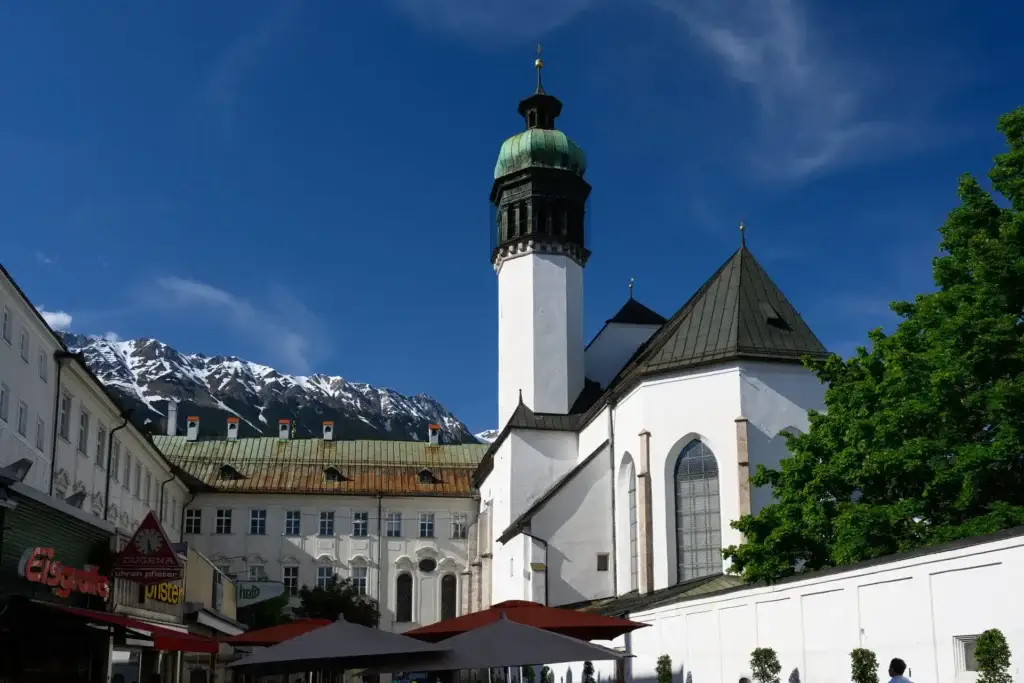
Located on the outskirts of Innsbruck’s old town and built in the sixteenth century, this monument of Roman Catholic history has several names. The Franciscan or black-skinned Schwarzmander church. However, today, it is known as the Court Church of Emperor Maximilian the First Hofkirche. This name has a historical basis. It was a project implemented as a place for the future burial of the said monarch, who never found his final resting place here. For over six centuries, a tomb has been empty in the middle of the church as a cenotaph explicitly built for it. Twenty-eight life-size bronze figures, which were supposed to guard the eternal sleep of their master, froze around her. This project was completed thirty years after the death of the prince. However, the guards are waiting all this time near the empty tomb. Sculptors made most of these characters from real people. These are the prince’s chosen heroic ancestors and famous figures of the time, including King Arthur, King Ferdinand of Portugal and Archduke Sigmund of Tyrol. And, of course, his beloved women – Maria Sforza and Burgundska.
Heroes who gave their lives for the region’s freedom are buried in this church. Among them is Andreas Hofer, who raised the Tyroleans against Napoleon’s troops and was executed for it. Nearby, Archduke Ferdinand II and his wife Filipina found their shelter in the Silver Chapel.
And, of course, the organ. There are two of them here. The five-hundred-year-old organ of Jörg Ebert’s fifteen registers was the largest in Austria during the Renaissance and has been preserved in excellent condition. On the other side is another organ by Hans Mauracher, whose age has crossed the century mark.
What else should you not forget to see in this historical place? Bells. They sound unique and melodious. There are five of them in the Hofkirche Tower, which was made by the founder of the bells, Friedrich Reinhart, the bell makers of the Leffler family and Johann Heinrich Wikrath.
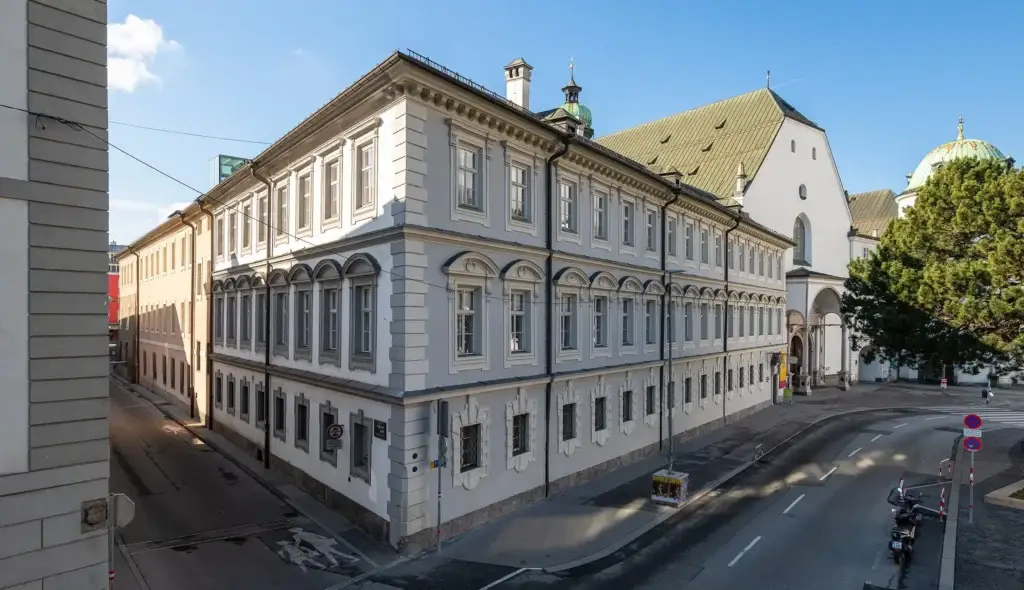
A former Franciscan monastery in Innsbruck’s old town houses the Tiroler Volkskunstmuseum, a folk art museum. It is one of the five state museums in Tyrol. The Museum of National Heritage, Folklore, and Culture of the People of the Former County of Tyrol, which, in addition to the current federal land, included South Tyrol, Trentino and the territory of the Laden Valley near the Dolomites. Today, it is the territory of Italy. Its foundation was at the end of the nineteenth century. Then, the Tyrolean Trade Association decided to build the Tyrolean Trade Museum in Innsbruck. At that time, an important reason is difficult for us to understand today. The implementation of widespread industrialization in the region called into question the further development of local crafts. Over time, the museum was transferred to the ownership of the Chamber of Commerce, where they began to form expanded collections of quality products of local craftsmen, objects of Old Tyrol’s decorative art and folk crafts. This decision, in particular, made it possible to raise the role of local crafts in society and not lose the national identity of this area.
At the beginning of the last century, the exposition expanded, and the museum got a new place of residence and a new owner in the person of the state. At the beginning of this century, after its merger with the Tyrolean State Museum Ferdinandeum and in honor of the eightieth anniversary of its foundation, a large-scale reconstruction was carried out here.
In general, this did not affect the preservation of fragments of the past era in the halls – elements of the Baroque, Renaissance, Gothic, etc.
Some cultural assets of this ethnic community date back to the end of the nineteenth century, when they began to be collected even before the beginning of the First World War. You start to feel the passage of time here as soon as you cross its threshold.
On the first floor, much space is devoted to church holidays, folk customs, decorative art, and Christmas and Easter nativity scenes.
On the second floor, everything is connected with everyday life. Worry, struggle for survival, fear for courage and children, household, property and clothes. On forty-eight hand-carved figurines, visitors can see beautiful, romantic folk clothes not used in everyday life today.
An important point is technology. A multimedia show is used here, thanks to which you will learn a lot about Austria and Tyrol, the court church connected to the museum, and many other exciting things. And with the help of digitized information, you can learn everything about the selected research object.
It is a bridge built over many years between the past and the present. About how the nation survived the difficult years of war and reconstruction, developed the economy, and raised children. And the result can be seen already.
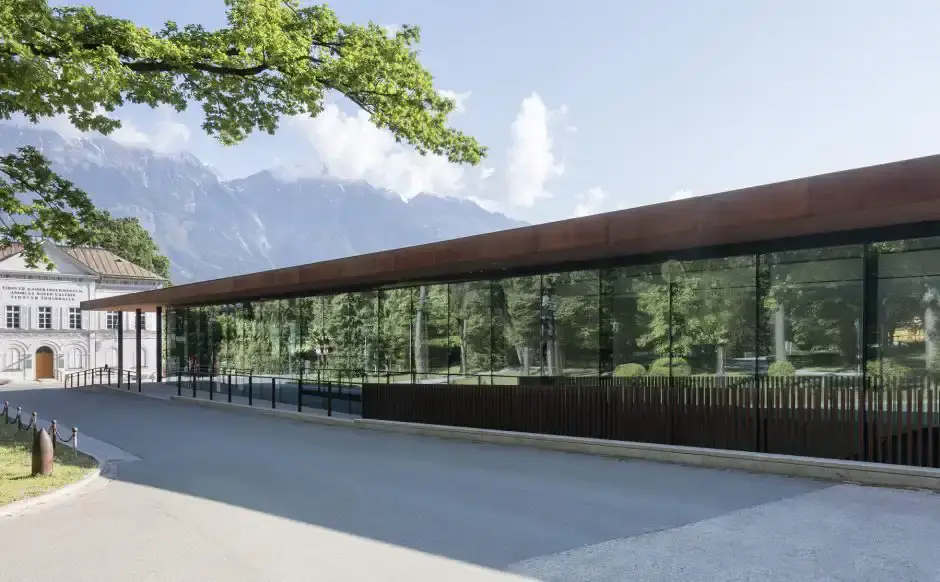
For many years, the main exhibit of the historical museum has been the well-known painting “Tyrolean Panorama”, which has been preserved since the nineteenth century. You get into the thick of military operations that are taking place around you on thousands of square meters. It is an artistic recreation of the Battle of Bergisel in 1809 when the Austrian rebels defending their independence gave battle to the invincible French army of Napoleon and won.
Andreas Hofer led the rebellion. Later, the uprising was suppressed by the French and its leader, who became a national hero, was shot. At the beginning of this century, a museum was built on the battle site, almost eight hundred meters above sea level, on Bergisel hill, in memory of its national past, the Tyrolean people’s steadfastness to freedom, indomitable spirit and loyalty to traditions. This current generation of Tyroleans paid tribute to their brave ancestors and restored historical justice by building a museum on this very spot. This victory is reflected in the composition as an integral part of the “Myth of Tyrol”.
Of course, before moving to the historical site of the battles, the open panorama of the museum was located on the other side of Innsbruck, by the river Inn in the Rotunda, an exquisite historical building in a round shape topped by a bathhouse.
A few words about the panorama itself. The walking route stretches for more than two kilometers, with specific stops to explore the historical past, observe the surrounding scenery and look down on Innsbruck, which stretches out in the valley.
In addition to this, the museum has a lot to see. These are thematic expositions about the flora and fauna of this area, religion, nature, paintings, politics, manuscripts and documents, particularly of Emperor Maximilian, etc.
A highlight of Panorama Tirol is that the panorama is connected underground to the Kaiserreger Regimental Museum. Here, you can familiarize yourself with the military history of Tyrol from the nineteenth to the twentieth century.
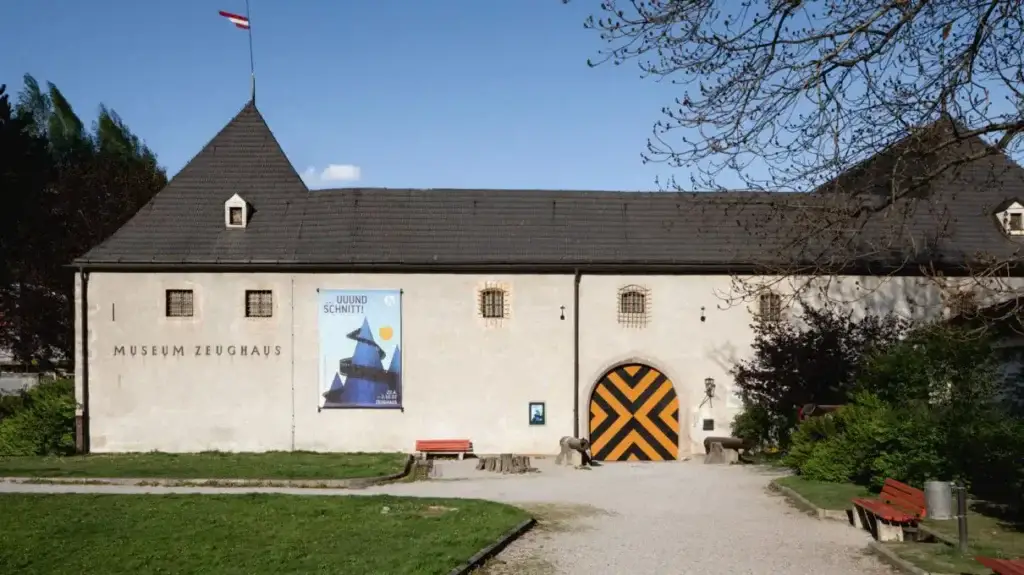
Outside the old Innsbruck, on its former historical border, where one of the entrance gates to the city once stood, is a large two-story fortification structure with thick brick walls used for fortresses in ancient times. The architectural complex of the sixteenth century was built in such a way that it allowed several rooms to be connected in a circle, forming a closed, well-fortified courtyard with arched galleries in the middle. This is the old arsenal zeughaus – Tiroler Landesmuseen. The former military arsenal, the armory, is now positioned as the State Museum Yard, one of the branches of the Tyrolean National Museum. And here, there is something to remember.
Returning to the past, let’s recall that at one time, the emperor of the Roman Empire, Maximilian, was the first to choose the place of the arsenal for storing weapons and ammunition for a reason. Even then, Innsbruck had a convenient transport interchange, was considered a trade and industrial center, and developed manufactories to manufacture weapons. And, of course, the Tyrolean mines, which mined copper, were of great importance. All this had to be fenced off from enemies.
The site was chosen on the banks of the Sil River, which originates at the Brener Pass and flows into the Inn River. Thanks to the nature of this mountain river with its fast current and impregnable waterfalls, the fortification received another natural, difficult-to-access barrier, including the Brenner Falls, which in those days was in front of the city gates.
By the way, thanks to the waterfalls of this river, including the four-meter Sill, the modern city receives water and electricity from the river flow at three power plants.
It was a natural fortress, used for many years as the Zeughauskaserne, and after the fall of the monarchy at the beginning of the twentieth century, it housed barracks.
During peacetime in the 1960s, the Arsenal premises were restored and handed over to the Tyrolean National Museum. Since then, appropriate military compositions have been created about military actions in which Austrian troops took part. You can see how the economy, religious life, and technical progress developed here. You can visit the open-air cinema or scheduled concerts in the courtyard in the summer.
Lastly, it is for tourists and history lovers. Since the Arsenal is an integral part of the Tyrolean State Museum, the organizers offer a bonus for a democratic payment – by purchasing one ticket, you can visit five museums.
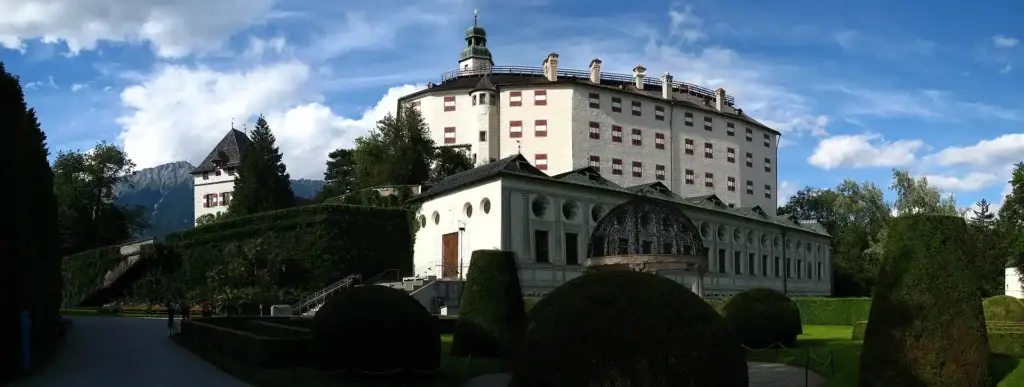
The beautiful Abrams castle complex in Innsbruck was built at the behest of Duke Ferdinand II and was supposed to reflect Tyrol’s power, symbolism, and power. Unique frescoes, mosaic doors, ornate carvings on the ceiling, collectible antiques, paintings, weapons, etc., are in perfect harmony here. And, of course, a neat garden and park area.
However, the same romantic love story is more suitable for this legendary place.
Duke Ferdinand was madly in love with Philippine Waltzer, with whom he dreamed of living here with his children. So he built a castle for her. Moreover, considering the future woman’s lower social position and despite their parents’ prohibition, the newlyweds secretly got married. Understanding at the same time that their future children will not be able to become heirs to their father’s throne. That’s what love does. In confirmation of this legend, there is a small chapel in the castle where all lovers who come here can get married.
Well, what else can be seen in the castle? The picture gallery of the Habsburg family, more than two hundred high-art paintings by Titian, Valasquez, and Van Dyck.
You will get many emotions by climbing one of the castle’s towers, from where picturesque landscapes open up, and ghosts have lived in the castle’s basements for over five centuries.
If you don’t have to see this miracle in person, you can buy a collector’s ten-euro silver coin, which features several musicians on the reverse and Castle Abrams on the obverse.
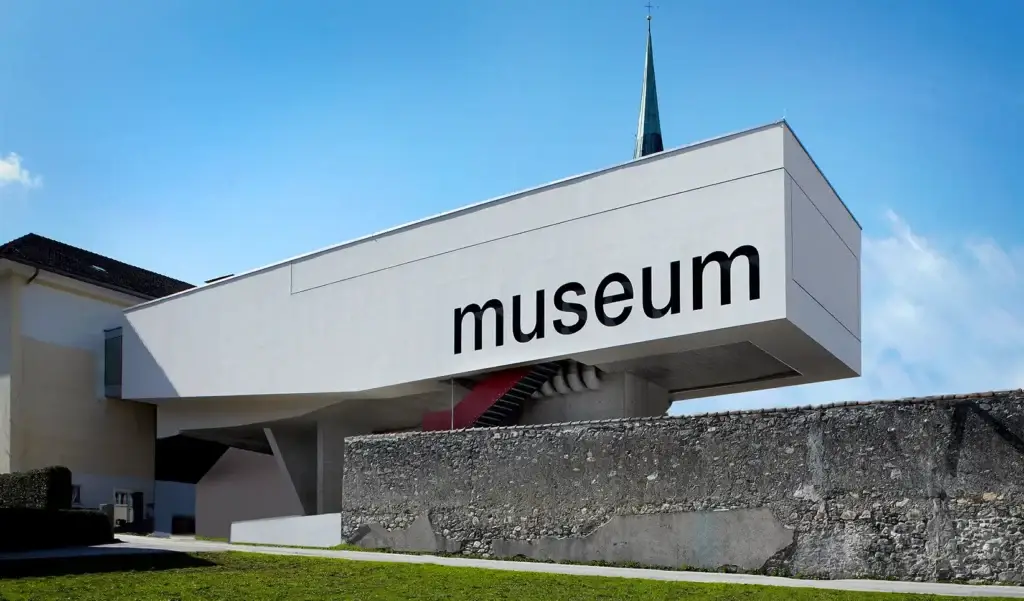
More than a thousand exhibits from the African continent and Asia are collected in the small town of Schwatz. This is a relatively young museum, the House of Peoples, created almost thirty years ago, where you can familiarize yourself with the culture of Africa, Indonesia, and Asia. The Museum der Völker in this Tyrolean city is positioned as the cultural association Haus der Völker by Gert Chezi and is known in Europe as the Museum of Ethnology. The exhibits were donated to the city of Schwatz by the museum’s founder, photographer, journalist, and professor Gert Chezi. For fifty years, he studied these peoples’ culture, history, art, and modernity.
The museum allows visitors to hear and see different cultures and life on distant continents. Lectures, concerts, acquaintance with the unfamiliar world of others, ethnographic collections, unknown culture. Anyone can get acquainted with artifacts from Southeast Asia and West Africa. Everything is done because today’s society needs additional and versatile knowledge about history, life, religion, and other peoples with different cultures, so distant and at the same time close to us.
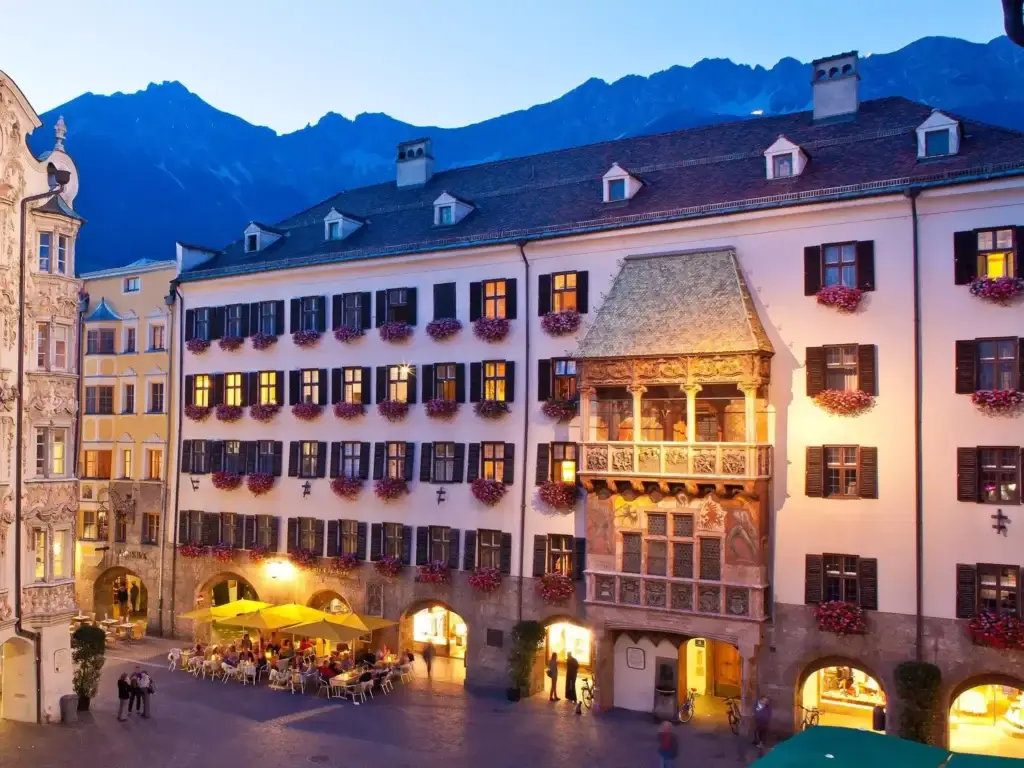
In the picturesque pedestrian zone of the old town in Innsbruck, near the Helblinghaus and other historical monuments, one of the business cards of Tyrol, the symbol of the city, the historical building Goldenes Dachl, stands out with its precious luster. In general, if you have to be near this architectural monument in cloudy weather, you must try hard to see the reflections of “gold” from this roof. Anticipating the questions of skeptics, let’s clarify. The roof over the balcony is not golden. It is covered with more than two thousand six hundred pieces of gilded copper plates.
Everything is correct. However, history is capricious, and some aspects should be considered in a broader perspective, especially regarding the Goldenes Dachl.
The first thing worth paying attention to is the historic house built at the beginning of the fifteenth century by Archduke Frederick the Fourth as the residence of the Tyrolean rulers. Later, Emperor Maximilian the First, in honor of his wedding with Bianca Sforza, ordered the design and construction of a golden roof in the form of a royal bed, from where he and his wife and courtiers could observe everything that was happening in the square near the house. Various festivals, holidays, folk festivities, tournaments. All this took place here, under the control of the emperor.
The roof itself should be considered a complex with architectural masterpieces masterfully executed in the form of ornaments, frescoes and sculptural reliefs. Eight imperial coats of arms from the territories subordinate to him are placed on the facade and the sides. The fresco’s composition above the coats of arms with knights and the flags of the Roman Empire and Tyrol is completed. The rich history of that time is embodied in a relief sculpture on the building.
And for history lovers. All relief decorations on the house are high-quality copies. The originals are in the permanent collection in the Tyrol State Museum Ferdinandeum.
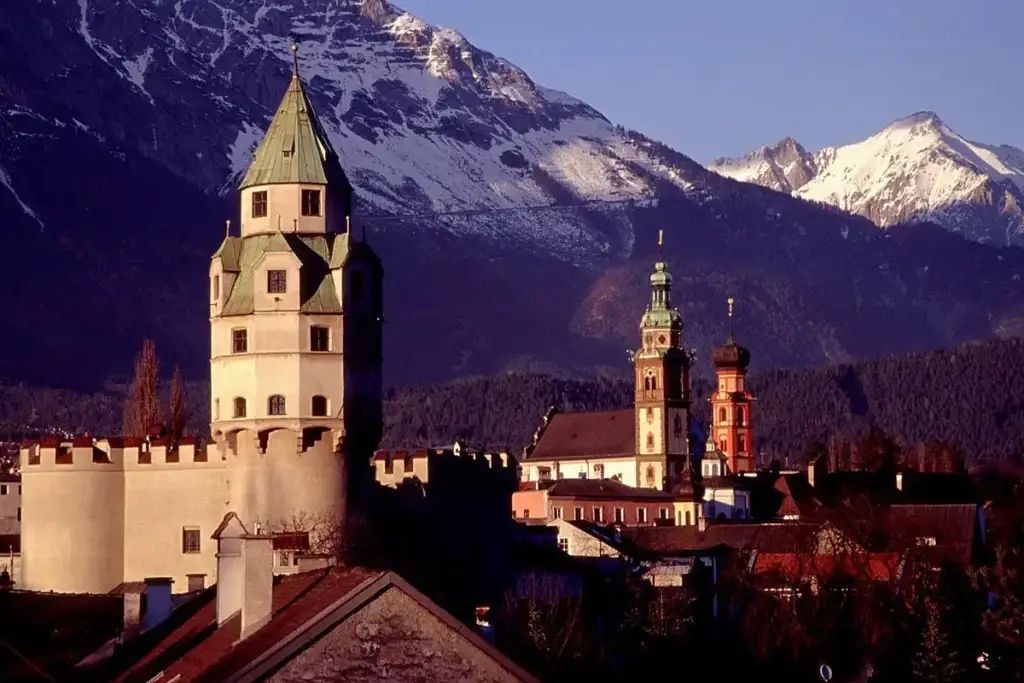
The small provincial Tyrolean town of Hall in Tirol, in the district of Innsbruck-Land, has a glorious historical past. In the eighteenth century, the world-famous original silver coin, the Maria Theresa thaler, was minted, and here you can see a replica of the world’s first roller embossing machine. And of course, the business card of the city and the dream of tourists, it is the largest silver thaler in the world, almost forty centimeters in size. The value of this thaler is in its weight. Twenty kilograms of pure silver. And all this at the Hall mint. Instead, in the glorious castle of Hasegg. But everything is in order.
In historical reference books, you can find the first mentions, dating back to the eighth century, of a watchtower on the border of Hull, on the site of which the Hasegg Castle was later built. As early as the thirteenth century, documents mentioned it as a tower near the salt works. Later, in the mid-fifteenth century, they began building a castle. This made it possible to protect the city and shipping on the river Inn from enemies and control the old salt road. At the end of the same century, a fortified bastion was built here – Hazeger Tor called the Coin Tower. And it was here, in Hasegg Castle, that in the middle of the sixteenth century, Archduke Ferdinand II moved his mint, which was closed by the Bavarians at the beginning of the nineteenth century.
What to see today? You will learn a lot about coin minting and its development history and see the machines.
Look at the world’s first copy of a machine that minted approximately four thousand coins. You will hear stories about the birth of the dollar and about wealthy coin lords, and you will even be able to stamp your coin in memory of the castle.
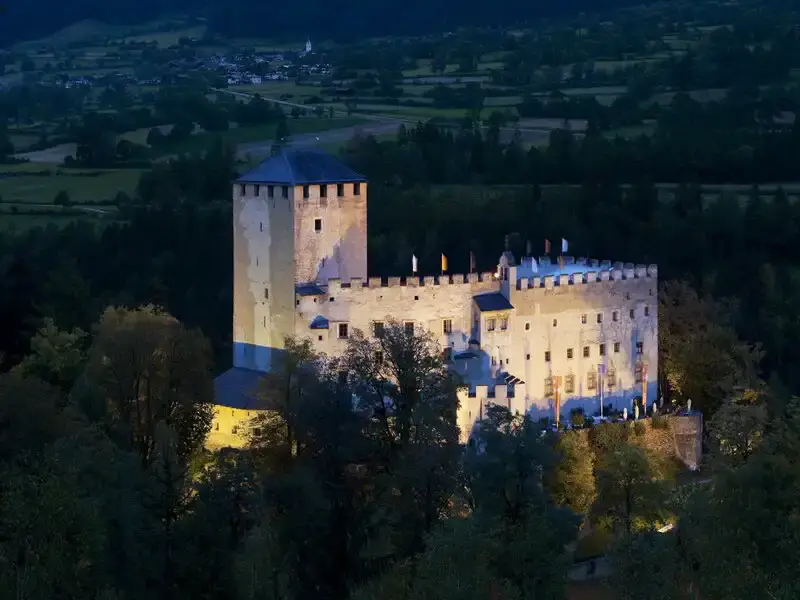
On the Hochstein mountain in eastern Tyrol is the town of Lienz, often identified with the historical castle museum Schloss Bruck, located nearby on the hill. By the way, the fortress got its name from the stone bridge. Now, it no longer exists; in those days, it was the only way to get to the castle.
Not many buildings from the old castle have survived. Tourists are open to fortification walls, the central tower, entrance gates, etc. You can visit the two-story chapel with frescoes from biblical scenes of the eighth century for curiosities.
Something from history. The castle was built at the beginning of the thirteenth century as the residence of the Counts of Hertz, the ancestors Gorytsko-Tyrol dynasty. Towards the end of the fifteenth century, the Hertz brothers ruled Tyrol inseparably and even
had the right to mint their Tyrolean coinage.
At the beginning of the sixteenth century, after the death of the last member of the Hertz family, the castle became the property of Emperor Maximilian the First, later – to the von Wolkenstein family, who completed several rotundas here.
The castle’s history changed according to the political trends of the time. For a long time, it was used as a military arsenal; later, this place was chosen by city courts for meetings. Then, they were replaced by monks, who founded a monastery here. In the eighteenth century, the fortress became the state’s property, the monks were asked to leave, and military barracks and a hospital were placed in their place.
At the beginning of the nineteenth century – the governor of Lienza bought the castle and turned it into a country house, and his son later built a brewery and an inn here.
During the First World War, the castle was transferred to the imperial patronage, and only in the last century did the castle become a museum. Instead, it is the Museum of Creativity and Traditions of East Tyrol, where you can see collections of paintings in forty halls, including the local artist Albin Egger-Lienz. Here, you can see the exhibits found during excavations in the museum’s archaeological department and get acquainted with the history of Tyrol. And, of course, from the castle wall or the central tower, you will be able to see from a height the beautiful landscape, the freezing beauty of the city of Lienz, and the valley of the Moselle River.
Periodicity, orientation, and transferability are, in particular, inherent in the dynamics of cultural development. Everything develops in its own time and space. In this sense, Tyrol’s historical and cultural heritage impresses with the scale of the desire to preserve cultural values and the historical identity of Tyrol and its inhabitants. Due to the preservation of folk traditions, the identity of the people, religious holidays, architectural monuments, historical artifacts and works of art.